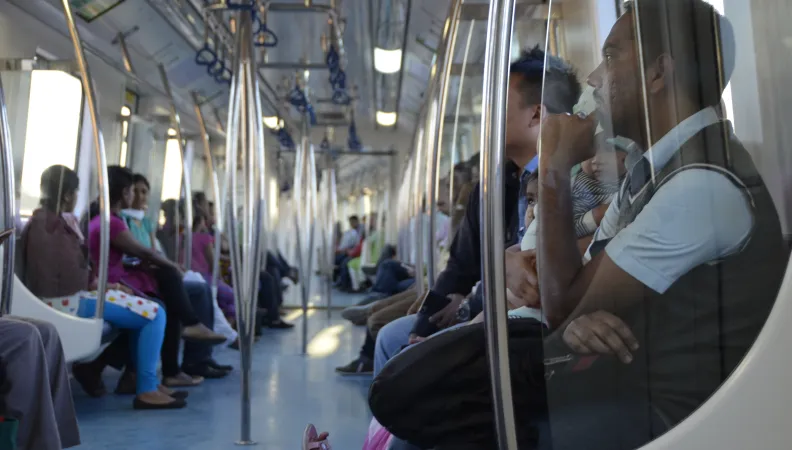Share the page
A metro to relieve congestion and reduce carbon emissions in Bangalore
Project


-
Project start date
-
Status
Ongoing
-
AFD financing amount
-
€ 310 000 000
-
Country and region
-
Location
-
Bangalore
-
Type of financing
-
Partners
-
European Investment Bank (EIB)
-
Beneficiaries
-
Bangalore Metro Rail Corporation
AFD is co-financing the metro in Bangalore. This project aims to ensure that urban mobility is accessible, safe and low-carbon.
Context
Bangalore is the third most populated city in India and the hub of the country’s “new economy”. It needs to address the challenge of rapid population and urban growth. The growing congestion on road networks and heavy air pollution have significant impacts on public health, urban productivity and economic attractiveness.
Bangalore Metro Rail Corporation (BMRC), the contracting authority, is in the form of a joint venture between the government of India and government of Karnataka. It has a mandate to relieve congestion in the city and ensure that its development is cleaner, with lower greenhouse gas emissions, by building and implementing the metro project.
Description
AFD has co-financed phases I and II of the construction of the metro, for EUR 110m and EUR 200m, respectively. The objective is to improve urban mobility in Bangalore City.
Phase I of the Bangalore metro was launched by BMRC in 2008 and involved the construction of two metro lines with a north-south route (24 km) and east-west route (18 km), which have been partially operational since 2011. It included the construction of 40 stations. There is one station every km and the pricing policy is attractive in order to make the metro widely affordable. AFD’s loan for phase I was allocated for the finalization of the infrastructure and equipment of these lines.
Phase II of the metro provides for the extension of the two existing lines in order to link up the city’s essential economic areas, as well as the construction of two new lines. 400,000 additional passengers a day are expected as soon as they are commissioned. AFD’s financing for phase II, allocated in 2014, is for the extension of the existing lines.
Impacts
- The metro relieves congestion in the city and promotes development with lower greenhouse gas emissions
- Improvement in quality of life and reduction of travel times: from 2022, 1.4 million passengers/day will benefit from the metro
- Development of infrastructure and commercial facilities near the stations.


